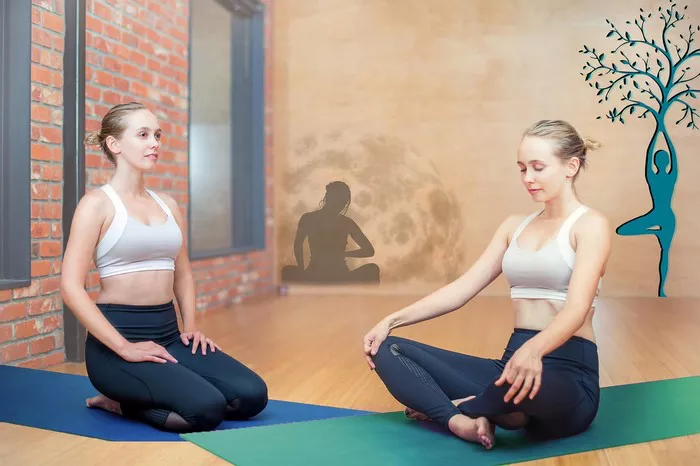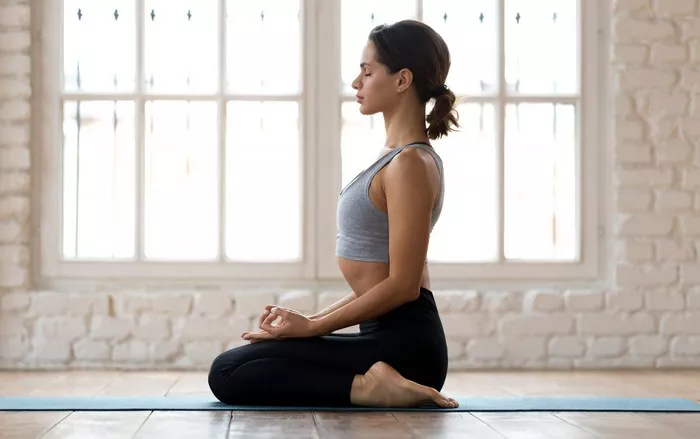Kriya Yoga is a powerful and transformative spiritual discipline that offers practitioners a way to achieve self-realization and deeper connection with the Divine. The practice of Kriya Yoga is rooted in ancient yogic teachings, particularly those passed down by great spiritual masters like Patanjali, Sri Yukteswar, Paramahansa Yogananda, and others. Kriya Yoga is often referred to as a “yoga of action” due to its emphasis on physical techniques and mental discipline.
One of the key elements that makes Kriya Yoga unique is the understanding that it is not merely a physical exercise but a comprehensive spiritual practice that includes a range of techniques to harmonize the body, mind, and spirit. Kriya Yoga is based on the belief that human beings possess an innate ability to transcend the material world and realize their true nature, and the five branches of Kriya Yoga serve as the guideposts for this journey.
In this article, we will explore the five branches of Kriya Yoga in detail. These branches are Pranayama, Asana, Mudra, Bandha, and Dhyana. Each of these branches has its distinct purpose and effect, but they all work together to promote the overall development of the practitioner’s physical, mental, and spiritual well-being.
1. Pranayama: The Control of Breath
Pranayama is one of the most essential aspects of Kriya Yoga. It is derived from the Sanskrit word “prana,” which means life force or vital energy, and “yama,” which means control or regulation. Therefore, pranayama refers to the practice of controlling and regulating the breath, which in turn helps to control the flow of prana in the body.
In Kriya Yoga, pranayama is viewed as a powerful tool for cultivating energy and calming the mind. By controlling the breath, a practitioner can purify the body, balance the nervous system, and awaken higher states of consciousness. The practice of pranayama also plays a crucial role in deepening meditation and achieving spiritual awakening.
There are various techniques of pranayama used in Kriya Yoga, and they are typically classified into three categories:
Ujjayi Pranayama (Victorious Breath): This technique involves breathing deeply and evenly through the nose while slightly constricting the back of the throat, creating a soft sound similar to the ocean waves. Ujjayi pranayama is particularly effective in calming the mind and increasing the flow of prana to the brain.
Kapalbhati (Skull Shining Breath): This is a powerful breathing technique that involves rapid exhalations followed by passive inhalations. Kapalbhati is known to help cleanse the respiratory system, improve mental clarity, and detoxify the body.
Anulom Vilom (Alternate Nostril Breathing): This pranayama technique involves closing one nostril at a time while breathing deeply and alternately through each nostril. Anulom Vilom is excellent for balancing the energy channels in the body, reducing stress, and promoting emotional stability.
Through regular practice of pranayama, a practitioner can harmonize the flow of prana, enhance vitality, increase mental focus, and promote inner peace.
2. Asana: The Physical Postures
Asana refers to the physical postures or poses that are practiced in yoga. The word “asana” comes from the Sanskrit word “asana,” meaning “seat” or “position.” In the context of Kriya Yoga, asanas are used to prepare the body for meditation and help practitioners achieve a state of physical balance and stillness.
In Kriya Yoga, the focus is not on the physical form of the postures, but on the experience of alignment and energy flow that each asana provides. The primary purpose of asanas is to purify the body, increase flexibility, release physical tension, and create the conditions necessary for deeper meditation.
Some of the common asanas practiced in Kriya Yoga include:
Tadasana (Mountain Pose): A foundational standing pose that encourages the practitioner to stand tall and centered, creating a strong connection between the body and the earth.
Padmasana (Lotus Pose): This seated pose is a classic meditation posture used in many styles of yoga, including Kriya Yoga. The lotus pose helps to open the hips, create stability in the lower body, and encourage deep, focused meditation.
Setu Bandhasana (Bridge Pose): This pose helps to open the chest and heart area, improve spinal flexibility, and stimulate the energy centers along the spine.
Asanas in Kriya Yoga should be practiced with mindfulness and awareness. The practitioner focuses on maintaining a deep, steady breath while holding each pose. Over time, the physical body becomes stronger, more flexible, and better able to withstand the rigors of intense meditation practice.
3. Mudra: The Sacred Hand Gestures
Mudras are symbolic hand gestures that are used in Kriya Yoga to channel and direct energy in the body. The word “mudra” comes from the Sanskrit root “mud,” which means joy or bliss, and “ra,” meaning to produce. Mudras are said to “produce joy” by directing the flow of energy, promoting physical and mental balance, and fostering a sense of unity with the divine.
In Kriya Yoga, mudras are typically used during meditation to deepen concentration and to help align the mind with spiritual intentions. They are often combined with breath and other yogic techniques to create a powerful energetic shift. There are various mudras, and each has a distinct purpose:
Jnana Mudra (Gesture of Knowledge): This is one of the most common mudras, where the tips of the thumb and index finger are gently joined, while the other fingers are extended. This mudra is said to symbolize the unity of the individual self (Atman) with the universal consciousness (Brahman). It is used to promote inner peace and mental clarity.
Anjali Mudra (Prayer Gesture): In this mudra, the palms are brought together in front of the heart, as in a prayer position. This gesture symbolizes reverence, gratitude, and devotion, and is often used to connect with the divine.
Chin Mudra (Gesture of Consciousness): In this mudra, the tips of the index finger and thumb are joined together, while the remaining fingers are extended. It is said to help connect the practitioner to the universal consciousness and promote inner awareness and calmness.
Mudras play a significant role in Kriya Yoga as they help the practitioner become more aware of the subtle energies in the body. By using mudras, the practitioner can influence the flow of prana, enhance the quality of meditation, and cultivate a deeper sense of spiritual presence.
4. Bandha: The Energy Locks
Bandha refers to the practice of using physical locks or contractions to control and direct the flow of prana within the body. The word “bandha” means “lock” or “bind” in Sanskrit, and it refers to the technique of locking certain areas of the body to retain and concentrate energy.
There are three primary bandhas in Kriya Yoga:
Mula Bandha (Root Lock): This involves contracting the muscles of the perineum (the area between the anus and genitals). Mula Bandha is said to help awaken the dormant energy at the base of the spine, known as Kundalini, and direct it upward through the energy channels (nadis).
Uddiyana Bandha (Abdominal Lock): This involves drawing the abdomen inward toward the spine while holding the breath. Uddiyana Bandha stimulates the digestive system, purifies the body, and strengthens the core. It is also said to help balance the flow of prana in the body.
Jalandhara Bandha (Throat Lock): This involves gently lowering the chin toward the chest while keeping the spine straight. Jalandhara Bandha is said to help control the flow of prana to the head and calm the nervous system.
Bandhas are often practiced in conjunction with pranayama and asanas. By using bandhas, practitioners are able to control and enhance the flow of prana within their bodies, deepen their breath, and reach higher levels of consciousness.
5. Dhyana: The Practice of Meditation
Dhyana, or meditation, is the final and most essential branch of Kriya Yoga. The word “dhyana” comes from the Sanskrit root “dhyai,” meaning “to think” or “to meditate.” In Kriya Yoga, meditation is the means by which the practitioner attains direct experience of the Divine and gains insight into their true nature.
Meditation in Kriya Yoga is often guided by specific techniques designed to quiet the mind, control the breath, and focus attention inward. These techniques may involve the use of mantras (sacred sounds), visualizations, or concentration on specific energy centers (chakras) within the body.
The primary goal of meditation in Kriya Yoga is to cultivate a deep state of inner stillness and to experience the oneness of the self with the universe. By regularly practicing meditation, the practitioner can overcome the distractions of the mind, transcend the ego, and realize their divine nature.
Meditation techniques in Kriya Yoga may vary, but the essential idea is to deepen the connection to the present moment, go beyond the ordinary mental chatter, and access a higher state of consciousness. This practice ultimately leads to spiritual awakening, peace, and enlightenment.
Conclusion
The five branches of Kriya Yoga—pranayama, asana, mudra, bandha, and dhyana—work together to help the practitioner attain a state of balance, harmony, and spiritual awakening. These practices are not isolated from one another but interwoven, each enhancing the effects of the others. By engaging in these techniques with dedication, practitioners can unlock the full potential of their being, realize their true nature, and experience a profound sense of peace and connection with the divine.
Kriya Yoga is a comprehensive system that offers practical tools for transforming the body, mind, and spirit. Whether you are new to yoga or a seasoned practitioner, the five branches of Kriya Yoga can serve as a profound and effective path to personal growth, healing, and self-realization. Through consistent practice, the practitioner moves closer to the ultimate goal of yoga—self-realization and union with the Divine.
Related Topics:























